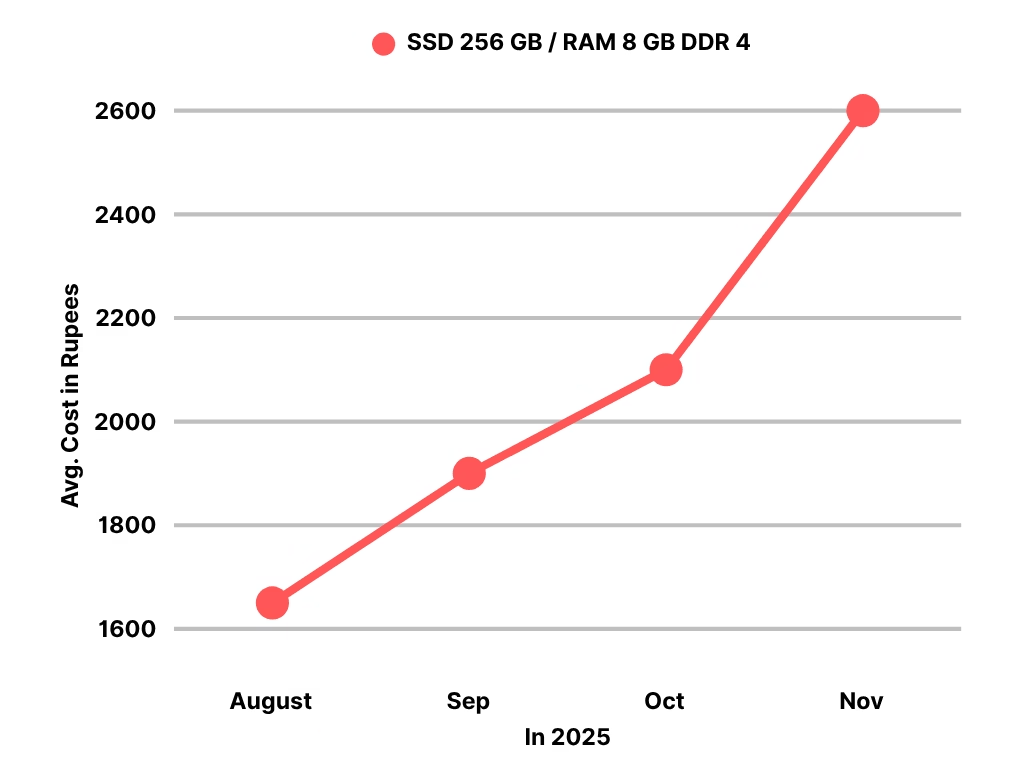Meet AMD: A Big Name in the Processor World

AMD (short for Advanced Micro Devices) is a major competitor to Intel and has been around since 1969. Over the past few years, AMD has gained massive popularity thanks to its powerful and affordable CPUs.
From everyday laptops to high-end gaming rigs and even servers, AMD processors are used everywhere. Their Ryzen series especially made headlines for offering great performance at reasonable prices — often beating Intel in multitasking and value.
Different Types of AMD Processors

Let’s break down AMD’s processor families in chronological order and explore what they offer — including cores, threads, base clock speeds, and best use cases. This will help you choose the right processor based on your needs and budget.
AMD A-Series & Athlon™ (2009–2017)
Target: Entry-level desktops and laptops
Status: Mostly discontinued, replaced by Ryzen and newer Athlon
| PROCESSOR | CORES | THREADS | BASE CLOCK | MAX BOOST | CACHE | BEST FOR |
|---|---|---|---|---|---|---|
| A6, A8, A10, A12 | 2–4 | 2–4 | ~2.0–3.5 GHz | Up to 4.0 GHz | 1–4 MB | Light tasks like Office, email, media |
| Athlon X4 | 2–4 | 2–4 | ~3.2 GHz | ~3.8 GHz | 2–4 MB | Students, budget desktops |
| Athlon 3000G (2019) | 2 | 4 | 3.5 GHz | – | 5 MB | Basic browsing, e-learning |
AMD FX™ Series (2011–2016)
Target: Desktop performance users (now outdated)
Status: Discontinued, replaced by Ryzen
| PROCESSOR | CORES | THREADS | BASE CLOCK | MAX BOOST | CACHE | BEST FOR |
|---|---|---|---|---|---|---|
| FX-6300 | 6 | 6 | 3.5 GHz | 4.1 GHz | 8 MB | Entry-level gaming, legacy builds |
| FX-8350 | 8 | 8 | 4.0 GHz | 4.2 GHz | 8 MB | Multitasking, older desktops |
These CPUs were known for high core counts but lagged behind in efficiency and modern features.
AMD Ryzen™ Series (2017–Present)
Target: Mainstream users, gamers, creators
Status: Active and growing (Zen → Zen 5 in 2024)
| MODEL | CORES | THREADS | BASE CLOCK | MAX BOOST | CACHE | BEST FOR |
|---|---|---|---|---|---|---|
| Ryzen 3 | 2–4 | 4–8 | ~2.6–3.8 GHz | Up to 4.0 GHz | 4–8 MB | Web, video, Office |
| Ryzen 5 | 4–6 | 8–12 | ~3.2–4.0 GHz | Up to 4.6 GHz | 8–32 MB | Mid-level gaming, editing, daily work |
| Ryzen 7 | 8 | 16 | ~3.4 GHz | Up to 5.0 GHz | 16–40 MB | Streaming, content creation |
| Ryzen 9 | 12–16 | 24–32 | ~3.3 GHz | Up to 5.7 GHz | 64+ MB | 4K/8K editing, 3D rendering |
| Ryzen Threadripper | 24–64 | 48–128 | ~3.0 GHz | Up to 4.5 GHz | 128+ MB | Professionals, studios, simulation workloads |
Fun Fact: “Ryzen” = Horizon + Zen (Zen is AMD’s microarchitecture name)
AMD PRO Series (2017–Present)
Target: Business-class laptops and desktops
Status: Active
These are Ryzen-based CPUs with business-focused features like:
- Secure Boot and Encryption (AMD Memory Guard)
- Remote management (for IT teams)
- Extended reliability (tested longer)
Perfect for offices, government systems, or IT-managed organizations.
AMD EPYC™ Series (2017–Present)
Target: Servers, cloud computing, enterprises
Status: Active (based on Zen architecture)
| MODEL | CORES | THREADS | CLOCK SPEED | CACHE | BEST FOR |
|---|---|---|---|---|---|
| EPYC 7002/7003 series | 16–96 | 32–192 | ~2.2–3.5 GHz | Up to 256 MB | Data centers, virtualization, AI, HPC |
Not for general users, but a big hit in enterprise and cloud industries (competes with Intel Xeon).
AMD Ryzen Z1 & Ryzen Z1 Extreme (2023)
Target: Handheld gaming consoles (like ASUS ROG Ally)
Status: New product category
| MODEL | CORES | THREADS | GPU | BEST FOR |
|---|---|---|---|---|
| Z1 | 6 | 12 | RDNA 3 | Portable gaming |
| Z1 Extreme | 8 | 16 | RDNA 3 | High-end handhelds |
Bringing Ryzen power to portable consoles and compact PCs.
How to Read the Text Printed on an AMD Processor
Here’s an example using an actual AMD processor. Let’s decode each line:

| PART | VALUE | WHAT IT MEANS |
|---|---|---|
| Brand | AMD | The company that manufactures the processor |
| Product Line | Ryzen | AMD’s performance and mainstream desktop series |
| Series Tier | 5 | Indicates performance tier:• Ryzen 3 = Entry-Level• Ryzen 5 = Mid-Range• Ryzen 7 = High-End• Ryzen 9 = Enthusiast |
| Model Number | 5600 | Each digit has meaning (see below) |
| Suffix | X | Indicates special features or performance tuning |
Deeper Breakdown of the Model Number
| DIGIT | MEANING | FOR “5600” |
|---|---|---|
| 5 | Generation – 5th Gen based on Zen 3 architecture (launched in 2020) | 5 = Zen 3 |
| 6 | Performance Tier – Higher number means better performance within the same generation | 6 = Mid-high tier |
| 00 | SKU Variant – Indicates specific version, cache, power features, etc. | 00 = Standard variant |
AMD Processor Suffixes – What the Letters Mean
| LETTER | MEANING | BEST FOR |
|---|---|---|
| G | Integrated Radeon Graphics | Budget desktops or compact builds without a GPU |
| X | High Performance | Users needing higher base/boost clocks |
| U | Ultra-Low Power | Thin & light laptops with extended battery life |
| H | High Performance (Laptops) | Gaming and professional workloads |
| HS | High Performance Slim | Slim laptops with strong performance |
| HX | High Performance Unlocked (Laptops) | Enthusiasts, overclockable gaming laptops |
| XT | Tweaked Version of ‘X’ with Slight Boost | Enthusiasts wanting a bit more speed from the ‘X’ |
| C | Chromebooks | Entry-level systems running Chrome OS |
| E | Embedded | Industrial or dedicated-use devices (e.g., kiosks) |
| AF | Silent revision of older CPU (e.g., Ryzen 5 1600 AF = Zen+) | Budget users seeking older architecture refreshes |
| PRO | Business/Enterprise Features | Office desktops/laptops with manageability, security |
Example
- Ryzen 5 5600G: 6-core CPU with integrated Radeon graphics — no need for GPU.
- Ryzen 7 5800X: High-end desktop CPU with 8 cores and higher clock speed.
- Ryzen 9 5900HX: Overclockable high-performance laptop CPU.
- Ryzen 3 3250U: Power-efficient dual-core CPU for basic laptop use.
How to Check Your AMD Processor
Just like Intel, it’s easy to find out what AMD processor your system has:
Right-click on “This PC” → Properties
or
Open Task Manager → Performance → CPU tab.
Quick Comparison: AMD vs Intel
Here’s a simple side-by-side comparison to highlight some key differences between AMD and Intel processors. To learn more about Intel CPUs, check out our detailed post by Clicking Here
| FEATURES | AMD | INTEL |
|---|---|---|
| Price | Often more affordable at the same performance tier | Sometimes pricier, especially in higher-end CPUs |
| Multitasking | Excellent – thanks to higher core/thread counts in most Ryzen models | Also strong – newer i5/i7/i9 CPUs offer great multitasking |
| Gaming | Strong performance, especially with Ryzen 7000 and X3D models | Also excellent, especially i7 and i9 in 12th/13th/14th Gen |
| Graphics | Integrated Radeon graphics in “G” series CPUs | Intel Iris Xe or ARC graphics in newer models |
| Overclocking | Available on most Ryzen CPUs, usually with no motherboard restrictions | Supported only on “K” series with Z-series motherboards |
| Power Efficiency | Ryzen mobile chips are very efficient; desktop chips vary by model | Intel’s efficiency has improved in recent generations (e.g., 13th/14th Gen) |
| Thermals | Generally cooler in mid-range CPUs; high-end models may run hotter under load | Higher-end chips can produce more heat due to increased power draw |
| Platform Longevity | AM4 socket supported multiple generations, great for upgradability | Tends to change sockets more often (e.g., LGA1700 for 12th/13th Gen) |
Tech-AD is here to help
Need help choosing the right AMD or Intel processor? Tech-AD has you covered with easy guides and expert tips to make your decision simple.




Leave a Reply